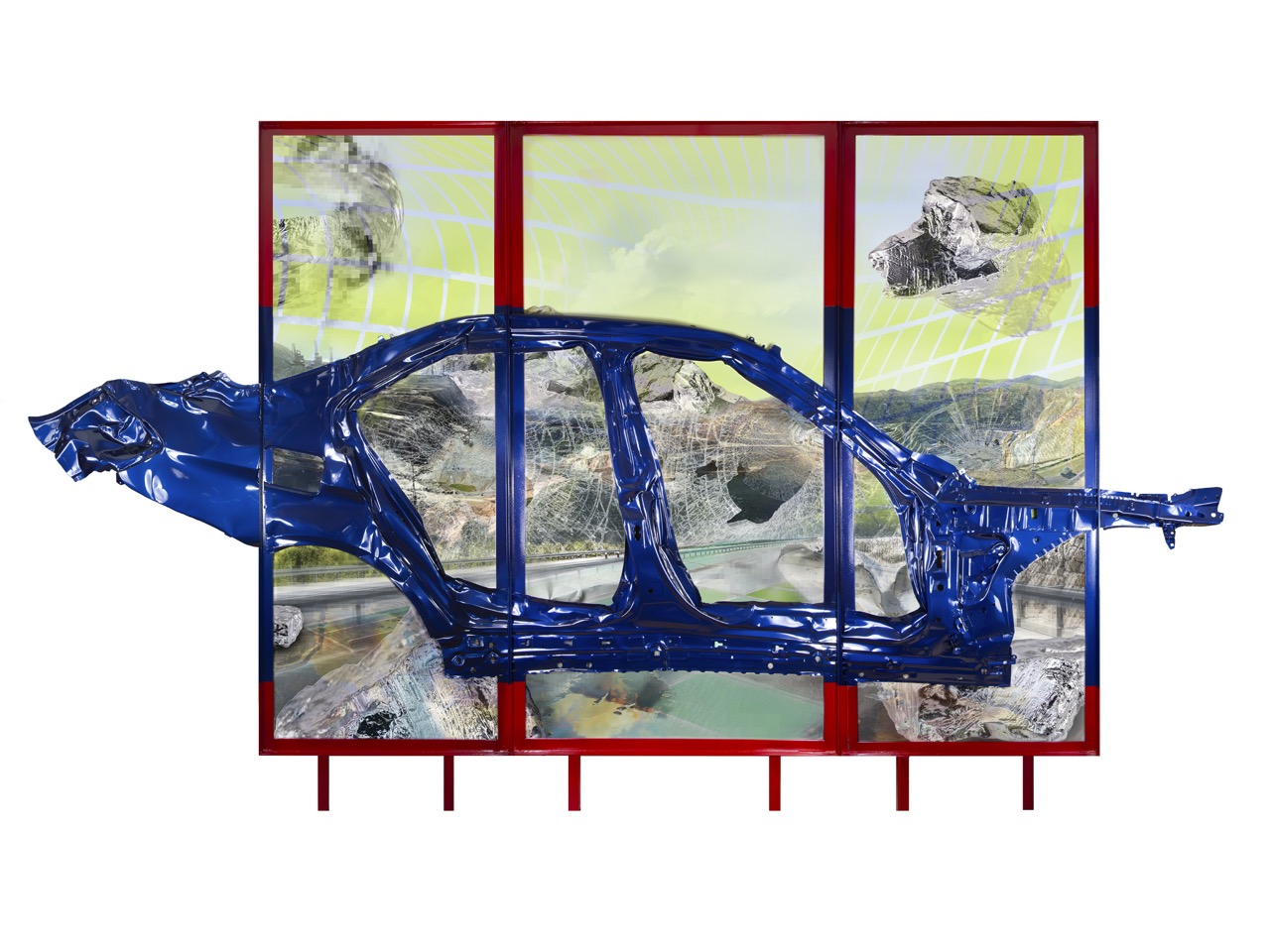AUTONOMOUS BODY | FELICITY HAMMOND
The analysis of the concept of hybridization is at the core of Felicity Hammond’s research (Birmingham, 1988), a study that unfolds as a primarily conceptual journey—the dynamics of progress, the dialectic between past and present—and consequently as a formal investigation, resulting in artworks that merge seemingly contrasting techniques and materials.
Autonomous Body perfectly encapsulates this approach: a striking and seductive installation that appears to rest on the silhouette—or rather the carcass—of a car. The complexity of the elements and the layering, both real and symbolic, of objects come together to form a monumental landscape. The size of the panels, which depict fragmented yet recognizable images of natural elements, water, trees, and asphalt, is only slightly smaller than the dimensions of the car, making the solidity of the installation—physically supported and visibly declared—appear paradoxically precarious.
Where does this sense of precariousness originate, and where is it positioned? As both an artist and researcher, Hammond constructs a complex conceptual framework based on two key terms: data mining and geological mining. Extraction, therefore, is conceived both as an analog process—a phenomenon of the past that remains relevant and necessary today—and as the extraction of data, an equally crucial process for contemporary technology. These two dimensions are encapsulated in a single symbolic element that contains them both: the car.
The images forming the background of these surreal and disorienting billboards result from sophisticated data recording technology used by a sensor (Lidar – Laser Imaging Detection And Ranging), which collects and processes large portions of the external world. The car thus becomes, perhaps unintentionally, one of many extensions of the concept of the ‘camera,’ incorporating not only a generative capability but also an autonomous driving function, stripping human intervention from the equation.
Autonomous Body is both a metaphor and a theater of memory, a complex and material architecture—just like the one required to generate and, above all, operationalize the vast amounts of data that define our present actions. It is significant that the car is crushed, flattened into a two-dimensionality that is more of a gesture than an endpoint: the skeletal frame of the vehicle almost resembles a vigorous brushstroke, a dense, twentieth-century expanse of color that paradoxically makes it more autonomous—and alive, in the precise sense of being functional—than ever before.
Autonomous Body by Felicity Hammond is currently on display at Fondazione MAST as part of the exhibition showcasing the finalists of the MAST Photography Grant on Industry and Work 2025, curated by Urs Stahel, open from January 30 to May 4, 2025.
Felicity Hammond
Autonomous Body, 2024
Steel, car body inner panel, Tesla car paint, C-type print, aluminium, 266 x 422 x 5 cm
Courtesy the artist and Fondazione MAST
19/02/25

